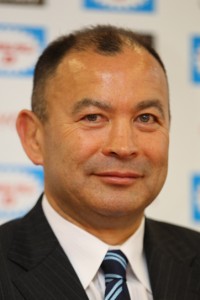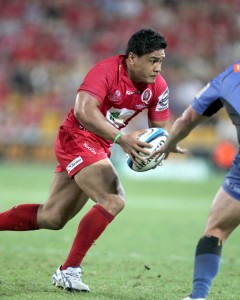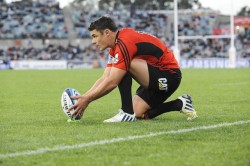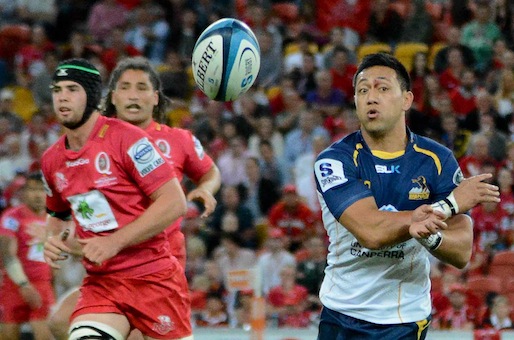One of the most hotly debated selections of recent times has been who should be 12. This selection more than any other Robbie Deans will make will tell us exactly what the tactical outlook of the Wallabies will be. Here I want to debate the theory of playing two playmakers, how it has come about and what the merits and limitations of the system are.

Under Eddie Jones, Australia started to adopt the idea of a second play-maker. Players have filled the role with variable success. Traditionally in NZ the “2nd 5” is what Australians have always called the “Inside Centre”. ‘Well, Der!’ I hear you say.
Let’s look at the language for hints as to the aims, and selection criteria, for those positions. I would argue that the NZ 2nd 5 is a specialist position, not an additional 5/8th as such, which is just what we have played since adopting the tactic. I think this evolved out of the “play by the numbers” game plan under Jones, which you will recall also did away with open and blindside flankers as specialist positions, adopting a left and right model. What are the core skill sets I would be looking for to fill the specialist roles of 10 and 12?
Skill-sets
[one_half last=”no”]
The specialist 10
1) Leading – first and foremost, he MUST be able to see the flow and pattern of a game, and implement the game plan devised, at the right moment for each tactic. The 10 fills a similar position to a forward commander on a battlefield.
2) Passing – must be able to pass from both hands with accuracy and speed. A long pass is an advantage, but few truly have it.
3) Kicking – must be able to kick with accuracy from the hand in general play under pressure.
4) Running – ideally he should be a threat with ball in hand, he need not have outright top end pace but be able to take the ball to the line and threaten the defence directly, or by his ability to position support players.
5) Defence – ideally all players should be strong defenders one on one, however at 10 the interaction between forwards and backs makes this a pivotal, but difficult defensive position.[/one_half]
[one_half last=”yes”]
The specialist 12
1) Passing – must be an effective passer from both hands, not necessarily a long passer.
2) Kicking – traditionally, kicking from 12 was not a great strength of Australian sides.
3) Running – must be a strong runner with the ball in hand.
4) Defence – must be a very strong defender on both the outside and in.[/one_half]
In my view, the 12 traditionally did not particularly take responsibility for tactical decisions. I believe the Australian archetypes of this style are Tim Horan and Nathan Grey. When he played 12, Michael Lynagh played this style, albeit with much more tactical kicking. If you could have Mark Ella at 10, and Michael Lynagh at 12, all the boxes would be ticked, and the two play-makers would also be present without sacrificing any of the core skills listed.
Positioning

The next point to consider, with two play-makers, is positioning. As already discussed, we inherited the idea of two play-makers playing at 10 and 12. In my opinion, Australian sides have sacrificed the traditional 12 mode of play because the second play-maker has been selected using the 10 skill-set, and under Deans, often played in the 15 position, thereby allowing the selection of a defensive “bash and barge” centre at 12. This has great advantages over the two play-maker 10/12 model in defence, and can allow a rapid counter attack with fast support from kick return. It can also be argued that it has allowed Australia to field all its best individuals at once, which also seemed to be the aim under the previous 10/12 model.
The issue arises in the loss of specialty skills that both a true 15, and a 12 possess. If we consider my previous article on the theory of playing two 15s in the back three, how many Australian 10s actually fill the skill set required for a 15? That loss of speciality strengths at 15 can be offset if there is a winger with the skillset to provide those specialist skills. Add to that the loss of specialist at 12, and we have a very strong defensive wall, but deficiencies become apparent in attack, support play, breakout defence and ability to react to changing play of the opposition, and even weather conditions.
When considering playing a second play-maker we should consider the overall balance of the backline, and filling the skill-sets required for each position. In terms of success and effectiveness of the Rugby played, regardless of the tactics, the most successful teams always show a completeness in the skill-sets of the players selected in the side, and a match for the tactics to be employed.
[one_half last=”no”]
The Reds:-
10. Cooper – defending tactically at 15 (I do not accept that he is being hidden in defence, it is a definite tactic and resulted in most of the counter attack against the Blues).
12. Taupai – fills the traditional 12 role and skill-set.
15. Lance – fills the traditional 15 role, with the second 15 being Cooper. There is no second 10 as such, and Genia largely covers this role.[/one_half]
[one_half last=”yes”]
The Waratahs:-
Have played their best and most attacking Rugby in years with a very traditional set up.
10. Foley – playing a traditional 10 game
12. Horne – again, a conventional 12 role
15. Folau – completing the picture. Again, there is no second 10.[/one_half]
The Wallabies:-

I don’t think it is any accident that over the last 6 years the Wallabies have been most successful when they have fielded a side that has selected individuals that mostly filled the core criteria for their respective specialist positions. The area in which the Wallabies have fallen down, is the misunderstanding that a “2nd 5” is just an additional fly-half.
I look at players like Walter Little, Ma’a Nonu and Richard Kahui and do not see an additional fly-half. I see an inside centre, a genuine 12, with the skill-set to play 12. Sure, Dan Carter can play 12 just as Michael Lynagh did, and he will step into 10 and play that role when the primary 10 is out of position, but first and foremost, they fill the core skill-set of a 12 when they play in that position and they provide options at 12 that others don’t, because they are especially gifted players.
Look at the selection policies of the All Blacks. If Carter, Cruden and Nonu are all fit we see Carter at 10, and Nonu at 12, because they best fill the specialist skill set of those positions. We do not see Cruden and Carter, unless Nonu is broken, and I would suggest Kahui would now step into 12 before Carter would be moved there. Remember when Horan and Grey (specialist 12s) played tests for Australia at 10 (even though both had played 10 before, at lower levels)?
I will leave it for others to argue the merits of individual selections in the respective positions, but I hope to see selections based on the holistic filling of the required skill sets for each specialist position, rather than a continuation of an overall philosophy of selecting to execute a specific game plan, at the expense of the ability to play a wide range of game plans with balance.


